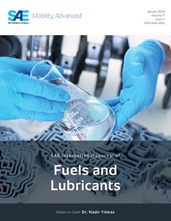Aspects of HC-SCR Catalyst Durability for Lean-Burn Engine Exhaust Aftertreatment
- Event
- Content
- Unique silver/alumina (Ag-Al₂O₃) catalysts developed using high-throughput discovery techniques in collaboration with BASF Corporation were investigated at General Motors Corporation under simulated lean-burn engine exhaust feed conditions for the selective catalytic reduction of NOx using hydrocarbons (HC-SCR). Hydrocarbon mixtures were used as the reductant to model the multi-component nature of diesel fuel and gasoline. Previous work has shown promising HC-SCR results in both laboratory reactor and engine dynamometer testing. This report investigates several aspects of HC-SCR catalyst durability, including thermal durability, sulfur tolerance, and hydrocarbon deactivation. Results from this laboratory reactor work provide the basis for the development of general guidelines that can be used to maintain maximum NOx reduction by controlling the maximum catalyst thermal exposure, providing suitable sulfur regeneration conditions, and determining the appropriate catalyst formulation to mitigate low temperature hydrocarbon poisoning.
- Pages
- 19
- Citation
- Schmieg, S., "Aspects of HC-SCR Catalyst Durability for Lean-Burn Engine Exhaust Aftertreatment," SAE Int. J. Fuels Lubr. 3(2):691-709, 2010, https://doi.org/10.4271/2010-01-2160.
